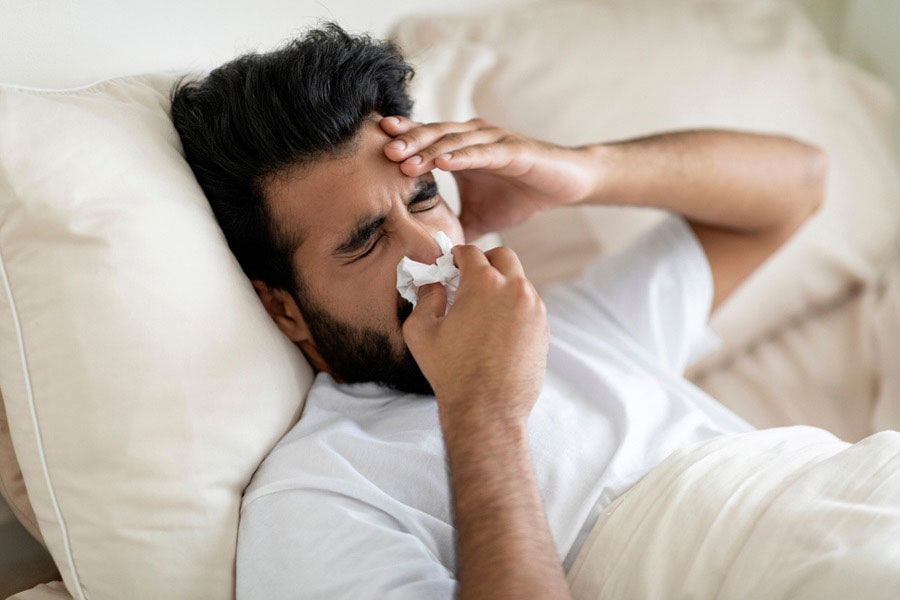Adjectives are an inseparable part of the vocabulary of disease. Acute disease, chronic disease, persistent disease, recurrent disease, sporadic disease… the list seems endless. Think of ‘seasonal’ and you have added another arrow in your quiver of sickness. At the intersection of geography and biology, seasonal diseases are unique in how they behave and when they can kick into action.
With winter knocking on the door of most countries (and already through the door in some), let us highlight diseases specific to the falling mercury. Barring countries of the Southern Hemisphere, where summer currently reigns supreme, including Down Under, where the white heat of stalemate holds for now between the Indians and the Aussies!
Winter does not behave the same everywhere. While the UK is destined to be wet and cold, cross the Atlantic and you will find Americans bracing for the snow despite the sun. Winter in India is largely mellow, like a reluctant student attending their first day in a boarding school. But whether we approach zero degrees Celsius or get surrounded by snow, some diseases arrive before Christmas cards once the mercury starts plummeting. Let us unpack the major ones — their signs, symptoms and remedies.
- Common cold (rhinovirus)
Viruses love colds. They foster better, spread better and colonise better when the temperature drops. When curtains are closed and windows are shut, viruses are overjoyed. If you are coughing, sneezing and tearing, rest assured the virus has made its unwelcome entry. Feeling fatigued, feverish and drowsy will complete the circle of misery.

What makes the flu notoriously deceptive is its inherent quirky nature TT archives
- Flu (influenza)
If your temperature rises quickly, with a headache more severe than the usual, it’s probably the flu. But we must be cautious against jumping to conclusions. From malaria to lymphoma, countless ailments emerge with fever and headache as the primary symptoms. Thus, while flu is the commonest, any lingering signs of fever and headache warrant a doctor’s attention. What makes the flu notoriously deceptive is its inherent quirky nature. To put it simply, by the time one starts showing flu symptoms, the virus has already been passed onto at least one other person. Thus, one is contagious even before one is objectively sick!
- Respiratory Syncytial Virus (RSV)
Quite like the common cold virus, RSV runs amuck during winter. Fortunately for us, the symptoms are mild and self-limited. However, the same virus can turn increasingly virulent for the very young and the very old and immunocompromised.
- Covid
Our medical fraternity has coined a new word — flurona. Not just as another fancy term, but as an expression of a situation where the coronavirus can actually behave like the flu virus. Truth be told, in wintry conditions, it becomes challenging to distinguish between Covid, the influenza and common cold, with overlapping presentations of a nagging cough, fever and headache.

Pneumonia involves the complication of a bacterial invasion, as is the case with RSV and Covid TT archives
- Pneumonia
As an infection affecting the lung tissues at a deeper level, pneumonia involves the complication of a bacterial invasion, as is the case with RSV and Covid. Fever, productive cough and malaise are the trademark manifestations.
- Sinusitis
Another victim of the cold and the seasonal allergies is the sinus. Feeling clogged, with a headache that gets worse with coughing, sinusitis can be an agonising spell of misery during winter.
- Conjunctivitis
Just when you thought that cold-related diseases are restricted to the respiratory tract, we have some exceptions. Loosely called the ‘pink eye’, conjunctivitis can be caused by the same virus and bacteria that cause the common cold or the flu or even Covid. A crusty, reddish, painful eye are the woeful symptoms of a full-blown infection.
- Diarrhoea (norovirus)
Another exception to the respiratory rule is the norovirus that hits our gut. Cramping, diarrhoea and frequent vomiting are the prime symptoms.
Do and don’t for winter

Disinfect high-touch areas like countertops, doorknobs and dining tables to keep diseases at bay TT archives
Any disease can be relentless, when nurtured by nature. In winter, illnesses are rampant because contaminated respiratory droplets travel more easily in dry air when an ill person coughs or sneezes. Couple this with people tending to gather indoors and you have the recipe for a perfect storm of sickness. So, how do we thwart these illnesses?
To put it bluntly, when it comes to combating viral diseases, we need a lot of common sense. Here are some fundamental dos and don’ts:
- Do not cough on your hands. Instead cough and sneeze into the crook of your elbow
- Disinfect high-touch areas like countertops, doorknobs and dining tables
- Never share cups and glasses or other personal items
- Stay home until symptoms improve and you’re no longer contagious
- Wash your hands often with warm water and soap and use hand sanitisers intermittently
- Wear a mask in public and consider wearing a mask at home around family members to protect other people, particularly those who are immunocompromised
All of the above are vital measures. But when it comes to Covid, take the extra step — get the booster vaccine. Quite like influenza, vaccines are the only way to survive from this fiercely mutating virus.
Stay safe, stay fit, and enjoy the winter festivities!
Dr Shuvendu Sen, born and brought up in Kolkata, is a US-based physician currently serving as the vice-chair, Research, at the Jersey Shore University Medical Center, New Jersey. An award-winning physician and author, his works include The Fight Against Alzheimer’s (Rupa Publications, 2024), Why Buddha Never Had Alzheimer’s (HCI/ Simon & Schuster, 2017) and A Doctor's Diary (Times Group Books, 2014), among others. Dr Sen can be reached at shuvendusen57@gmail.com


